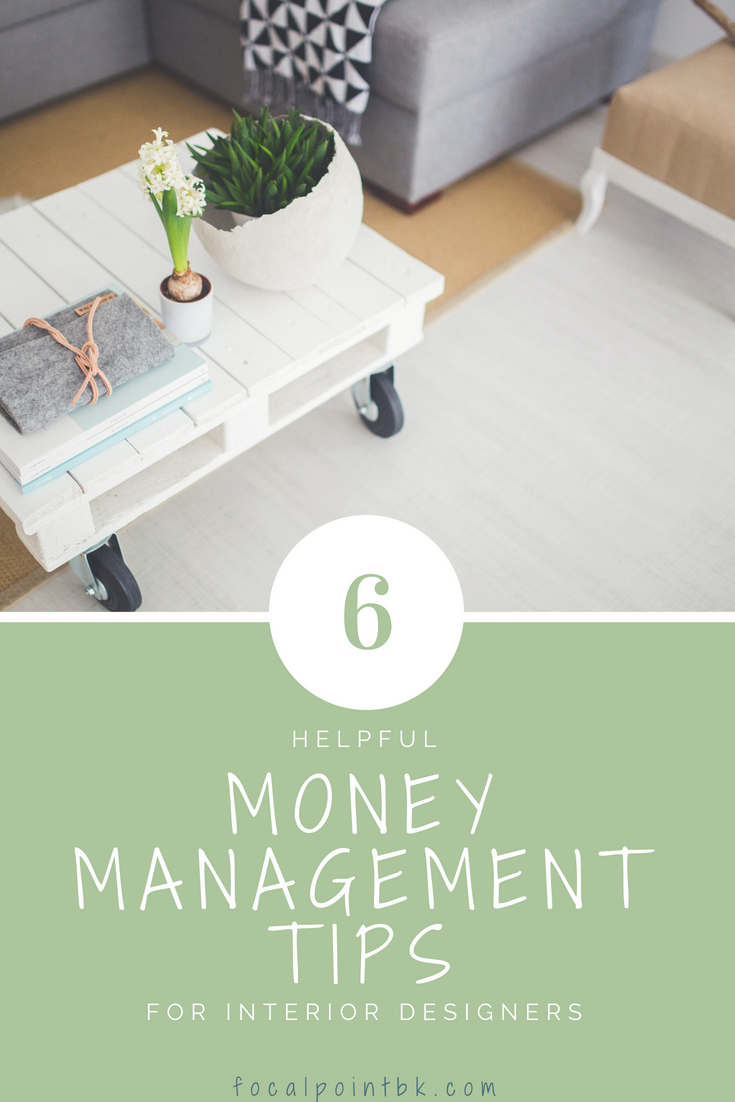You have a tough job when it comes to managing your interior design business finances.
For starters, client meetings and project work doesn't leave a lot of time for administrative duties, including bookkeeping. You're also often given large lump sums of money, but that money is spent in dozens of ways before you even make it to the bank.
So, how do you effectively manage each dollar to stay on budget for every project? How do you make sense of the numbers to understand your financial strengths and weaknesses?
It's crucially important to learn how to effectively manage your money to maintain a clear picture of your profitability.
That information is what will allow you to take your interior design business to the next level.
Cha Ching!
Here are some tips to get started.
1. Utilize a good project management software
Yes, these systems typically cost money. And, yes, the investment is worth it. Every single purchase you make for a project can include up to six transactions. That's right... SIX! Those details, along with other information, need to be tracked for accurate client invoicing, expenses/profit analysis, and financial reporting.
2. Record transactions in real time
Do your ears burn when someone refers to a sofa as a couch, or to draperies as drapes? If so, you know how I feel when I'm told, "I never record anything... I just give my accountant all of my receipts at the end of the year and they deal with it."
No, no, nooooooo!
Make a habit of entering your financial transactions into accounting software the same day you make them. It takes only moments of your day to enter a few transactions, and you and your financial team will be able to take advantage of your continuously updated records for analysis and planning.

3. Keep meticulous detail
With every transaction you enter, include as much information as possible (this is easier to do when you enter transactions daily since every detail is fresh in your mind). Doing so allows your bookkeeper to accurately record and analyze your activity, which gives you the ability to understand your ongoing profitability. Your tax preparer will also be able to use that information to maximize your tax savings at year-end.
4. Find ways to cut back on and simplify expenses
Less bills to pay equals less activity to manage, and could obviously mean cost savings as well. Take a look at your fixed and variable expenses, and analyze what can be combined, adjusted, or eliminated.
5. Become best friends with your bookkeeper
You have to stay in constant communication with your client, contractors, and vendors to ensure each job is completed seamlessly, right? You also have to regularly and clearly communicate with your financial team so they can help you accurately manage your financial activity, and ensure you're making the most out of your hard-earned money.
Buddy up! Engaged bookkeepers like me love hearing from their clients.
6. Be a document pack rat
If you're like most interior designers, you hate clutter. When it comes to documents, though, keep everything! Cloud-based document storage systems make it so easy to securely organize your records, and you'll have all the information your bookkeeper and accountant need to organize, prepare, and report your finances.
Now, if you don't have a financial team yet, it's time to start looking for one.
For starters, a good bookkeeper on your side can help you find the right software systems to use, and can take a huge chunk of the hands-on money management from your plate. This frees up your time for money-making activity, and ensures your finances stay up-to-date, accurate, and working for you.
What better place to start than a free consultation with me? Request yours here.
[DISPLAY_ULTIMATE_SOCIAL_ICONS]



